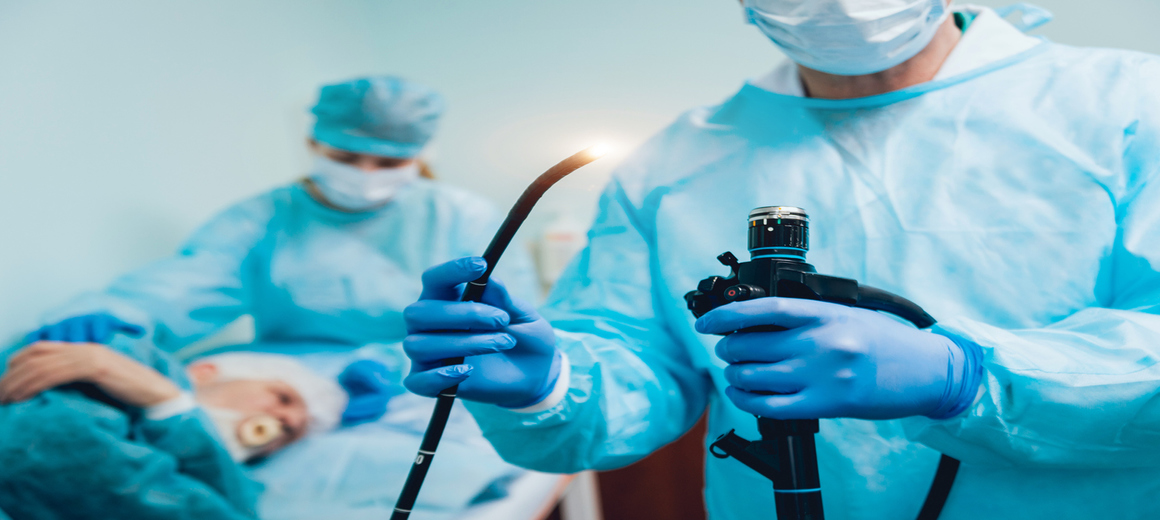
What is an upper GI Endoscopy?
An upper GI endoscopy is a procedure to diagnose and treat problems in your upper GI (Gastrointestinal) tract. The upper GI tract includes your food pipe (esophagus), stomach, and the first part of your small intestine (the duodenum).
This procedure is done using a long, flexible tube called an endoscope. The tube has a tiny light and video camera on one end. The tube is put into your mouth and throat. Then it is slowly pushed through your esophagus and stomach, and into your duodenum. Video images from the tube are seen on a monitor.
The most common reasons for upper Endoscopy include:
1.Unexplained discomfort or pain in the upper abdomen.
2.GERD or gastroesophageal reflux disease (often called heartburn).
3.Persistent nausea and vomiting.
4.Upper gastrointestinal (GI) bleeding (vomiting blood or blood found in the stool that originated from the upper part of the GI tract). Bleeding can be treated during the endoscopy.
5.Iron deficiency anemia (low blood count associated with a low iron level in the blood) in someone who has had no visible bleeding.
6.Difficulty swallowing; food/liquids getting stuck in the esophagus during swallowing.
How to prepare for test?
1.You may be asked not to eat or drink anything for up to eight hours before the test. This usually means no food or drink after mid night. It is important for your stomach to be empty to allow the doctor to visualize the entire area.
2.Please consult your doctor if you are taking any Heart medication / Over-the-counter medication / Diabetes medication.
3.You should arrange for a friend or family member to escort you home after the examination. Although you will be awake by the time you are discharged, the medications used for sedation may cause temporary changes in the reflexes and judgment and interfere with your ability to drive or make decisions.
What will happen during the tests?
1.You will be asked to lie on your left side. This provides the best view of the stomach.
2.Your blood pressure, pulse, breathing, and blood oxygen levels will be monitored during the test. An intravenous (IV) needle will be placed in your arm to provide a sedative. Sedatives help you stay relaxed and comfortable during the procedure. In some cases, the procedure can be performed without sedation. You will be given a liquid anesthetic to gargle or spray anesthetic on the back of your throat.
3.Air or carbon dioxide gas is gently introduced through the endoscope to open the esophagus, stomach, and intestine, allowing the endoscope to be passed through these areas and improving the doctor’s ability to see completely. The air may give you some discomfort or pressure. This is not harmful; this feeling is normal and should go away soon after the test.
Recovery from Endoscopy
1.After the endoscopy, you will be observed for a period of time, generally less than one hour, while the sedative medication wears off. Some of the medicines commonly used cause some people to temporarily feel tired or have difficulty concentrating. You typically will be instructed not to drive and not to return to work for the balance of the day of the procedure.
2.The most common discomfort after the examination is a feeling of bloating as a result of the air introduced during the examination. This usually resolves quickly. Some patients also have a mild sore throat. Most patients are able to eat shortly after the examination.
FAQs
1.How long will the procedure take?
2.An upper endoscopy takes approximately 10 to 30 minutes.
3.Can I drive myself home or take a taxi?
4.The medication you receive during the procedure impairs Your judgment, perception and coordination the rest of the day. Therefore, you will need a responsible adult to escort you from our facility to your home to assure your personal safety.
5.Will I have pain following the procedure?
6.You should have little or no pain following your procedure. You may have a slight sore throat that can be relieved with warm liquid, throat lozenges.
